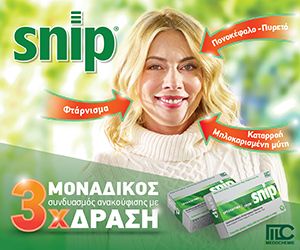Early Hearing Detection in Cyprus:
First language outcomes
Chryssoula Thodi1, Marios Vogazianos2, Paris Vogazianos3
1: Associate Professor of Audiology, European University Cyprus
2: Center for Preventive Paediatrics
3: Teaching Associate, European University Cyprus
Abstract
The reported early hearing detection outcomes were the first measurements among children referred by the Cyprus Newborn Hearing Screening Programme since the beginning of the screening Program in 2005. Participants were children whose families responded to the follow up call by the Centre for Preventive Pediatrics, the organization responsible for prenatal and infant screenings in Cyprus. Language development was assessed using the Action Picture Test (morphosyntax, pragmatics) and the Word Finding Test (expressive vocabulary). There were no statistical differences in language development indices between children with hearing loss and normal hearing, indicating that early detection of hearing loss and timely intervention can lead to commensurate development of language skills.
Introduction
Permanent childhood hearing impairment can have a devastating impact on communication skills, educational attainment, and quality of life, with a high cost to society. Babies learn to speak and communicate mainly through audition. Hence, the earlier we can identify and support children with a hearing loss, the better chances they have in developing their communication skills and improving their mental, social, and educational potential (Ching et al., 2017). Children who are identified with hearing loss early and receive proper intervention and support have the potential to develop language abilities that compare to those of normal hearing peers (Yoshinaga-Itano et al., 2017). Universal Newborn Hearing Screening Programs (UNHSPs) offer the best method of preventing the effects of hearing loss on the child’s quality of life. The proven model for success in hearing screening is the 1-3-6 model: screening in the first month, diagnosis of hearing loss by the third month, amplification and intervention by the sixth month of life (Yoshinaga-Itano et al., 2000, 2001). Therefore, the goal and criterion for success of newborn hearing screening programs relies on timely and appropriate diagnosis and intervention by the 6th month of life.
Early Hearing Detection and Intervention programs have been established in many countries with impressive results in early identification of children with hearing loss. Research studies on children who have been identified early have established the value of early diagnosis (Ching et al., 2017, Yoshinaga-Itano et al., 1998, 2000, 2001). However, the problem of missing children to follow up is a very pervasive one: in the United States, more than 50% of the children were lost to follow up (Crouch et all, 2017). In most countries the mechanisms (and people) responsible to monitor the infants are also burdened with monitoring infants with severe disabilities and possibly life-threatening conditions, placing sensory or other non-life-threatening conditions at a lower priority. Cyprus developed the first UNHSP in the Mediterranean in 2005, but babies referred for further evaluation did not initially go through any follow up protocol to ensure benefits of early intervention until 2008. Since 2008 referred infants have been initially assessed from the Cyprus Universal Newborn Hearing Screening Programme for indications of hearing loss, and then referred for evaluation and intervention. Although there are various potential mechanisms to monitor progress of the infants’ development, there has been no formal early intervention process, and no study has demonstrated increase benefit from the hearing screening in Cyprus. The reported work assessed children referred for hearing assessment between 2005-2012 by the Cyprus EHDI to assess language outcomes and efficacy of intervention.
Materials and Methods
Participants
Following approval by the National Cyprus Bioethics Committee, the Center for Preventive Paediatrics contacted families of children who were referred by the UNHS to invite participation in the follow up study. Thirty-seven families of referred children agreed to participate in the study, forming the experimental group. Twenty families of children with normal hearing and similar age distribution as the experimental group also agreed to participate. Control families were randomly selected among children who had passed the UNHS, to fit the age distribution of the experimental group.
Materials
Children older than 4 years (23 children in the experimental group and 16 in the control group) were invited to complete the Word Finding Test (WF) test, and to respond to the Action Picture (AP) Test. The WF test assesses expressive vocabulary, whereas the AP test assesses children’s’ pragmatic skills and morphosyntax.
Results

As language development indices were measured with different tests, an age-related percentile performance was estimated for each score, to compare across groups and skills. Figure 1 shows Word Finding measures for children in the various hearing groups.
Figure 1. Word Finding scores across groups: 1: normal hearing, 2: mild hearing loss, 3: moderately severe hearing loss, 4: severe hearing loss, 5: profound hearing loss/CI.
Figure 2 shows Action Picture, scores in the various hearing groups. Although a trend can be seen for lower Word Finding scores in the children with the worse hearing, it is not stable with the Action Picture test, resulting in non-significant overall differences.
Figure 2. Action Picture scores across groups: 1: normal hearing, 2: mild hearing loss, 3: moderately severe hearing loss, 4: severe hearing loss, 5: profound hearing loss/CI.
Statistical analysis
Language outcomes between groups were compared using the SPSS Analysis of Variance module. Results comparing language measures in groups with various amplification are shown in tables 1 and 2. Table 1 shows that there was no difference between children with bilateral hearing loss and normal hearing children, but children with cochlear implants had lower expressive vocabulary measures than children in the other two groups. As cochlear implantation takes place around the 10th month of age, expressive vocabulary might present with an initial delay in implanted children when compared to normal hearing or children with bilateral hearing aids who get the intervention a few months earlier. Table 2 shows that pragmatic skills and morphosyntax were not different across groups.
Table 1. Word Finding performance comparison across groups
| Word Finding(p) | NormalHearing | Bilateral Hearing Loss Hearing Aids | Bilateral Hearing LossNo Intervention | CochlearImplants |
| Normal Hearing | — | 0,148 | 0,106 | 0,002* |
| Bilateral Hearing Aids | — | — | — | 0,021* |
Table 2. Action Pictures performance across groups
| ActionPictures(p) | NormalHearing | Bilateral Hearing Loss Hearing Aids | Bilateral Hearing LossNo Intervention | Cochlear Implant |
| Normal Hearing | — | 0,153 | 0,152 | 0,103 |
| Bilateral Hearing Aids | — | — | 0,133 |
When the language measures were combined to form an overall language index, there were no differences between the groups.
Discussion
This study indicated that children with hearing loss referred by the Cyprus UNHS develop receptive and expressive language skills commensurate to those of normal hearing peers. These findings agree with published research (indicative recent publications only included here: Ching et al., 2017; Yoshinaga-Itano et al., 2017). As these findings are highly complimentary of the Cyprus UNHS and very encouraging, they are accompanied by limitations to this study. Families who responded to the invitation to participate can be described as motivated, and willing to be active in their child’s intervention and development. They took the time to come to the appointments based on their interest to gage their child’s performance. Evidently these parents might put more time into language stimulation activities, resulting in higher language development scores than families who did not participate in this project (Gilkerson et al., 2017; Yoshinaga-Itano et al., 2017). The families responding to the call to participate represented less than half of the referred children; there are no data on the level of services sought and received by the rest of the referred children. In response to the lack of coordinated follow up and intervention for children referred by the UNHS in Cyprus, the Ministries of Health and Education have recently (April 2018) announced a joint Early Communication Intervention Program. Studious quality control and outcome measures along the follow up process would be necessary to ensure a comprehensive, widely acceptable, and efficient early intervention program. For further inquiries, please contact Dr. Thodi at [email protected]
Work supported by project Newborn and Infant Hearing (NIH), Cyprus Research Foundation, Contract HEALTH/PUBLIC HEALTH/0308(ΒΕ)/23
References
Ching, T., Dillon, H., Button, L., Van Buynder, P., Marnane, V., Cupples, L., Leigh, G., (2017). Age at Intervention for Permanent Hearing Loss and 5-Year Language Outcomes. Pediatrics, 140(5), September 2017
Crouch, E., Probst, J., Bennet, K., Carroll, T., (2017). Evaluating Loss to Follow-Up in Newborn Hearing Screening in a Southern State. The Journal of Early Hearing Detection and Intervention, 2017; 2(1):40-47.
Gilkerson, J., Richards, J., Warren, S., Montgomery, J., Greenwood, C., Oller, D., Hansen, J., Paul, T., (2017). Mapping the Early Language Environment Using All-Day Recordings and Automated Analysis. American Journal of Speech Language Pathology, Vol. 26, 248-265. doi:10.1044/2016
Yoshinaga-Itano, C., Sedey, A., Wiggin, M., Chung, W. (2017). Early Hearing Detection and Vocabulary in Children With Hearing Loss. Pediatrics, 2017, August; 140(2), doi:10.1542/peds.2016-2964.
Yoshinaga-Itano, C., Coulter, D., Thomson, V., (2001). Developmental outcomes of children with hearing loss born in Colorado hospitals with and without universal newborn hearing screening programs. Semin Neonatol, 2001, Dec;6(6):521-9
Yoshinaga-Itano, C., Coulter, D., Thomson, V., (2000). The Colorado Newborn Hearing Screening Project: Effects on Speech and Language Development for Children with Hearing Loss. Journal of Perinatology 2000; 20:S131-S136
Yoshinaga-Itano, C., Sedey, A., Coulter, D., Mehl, A. (1998). Language of Early and Later Identifide Children with Hearing Loss (1998). Pediatrics, November 1998(102)5.


















